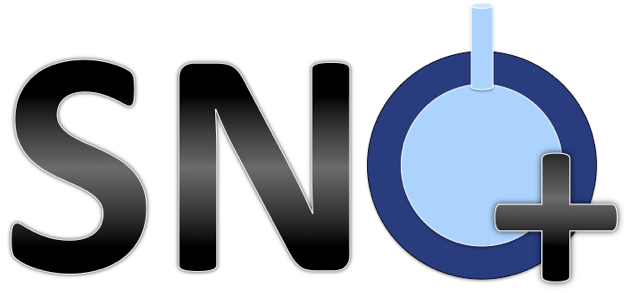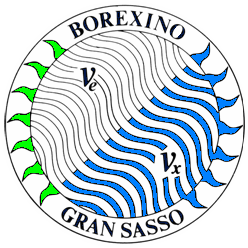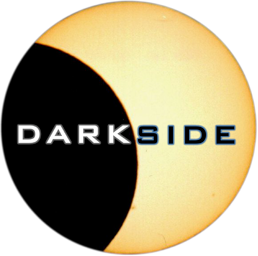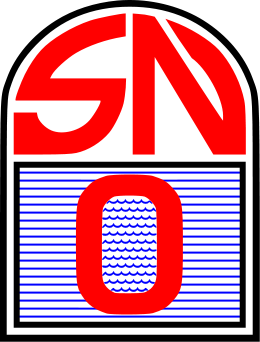The experiments with which I am currently involved with or which I have been involved in the past are briefly described below. Further information about these experiments can be found on the experiments' home pages (linked through their logos), and in my publications and presentations.
SNO+
SNO+ is a 780 tonne experiment that will study neutrinos using organic liquid scintillator (a mineral oil-like substance that gives off light when charge particles pass through it). SNO+ is a flagship experiment in SNOLAB.
SNO+ hopes to carry out a broad range of different neutrino studies, including:
- Low energy solar neutrinos. Solar neutrinos with energies lower than the 8B neutrinos studied by SNO can tell us even more about the way that neutrinos oscillate, the ways in which neutrinos interact with matter, and the way that the Sun burns.
- Neutrinoless double beta decay. The detection of neutrinoless double beta decay would prove that neutrinos are their own anti-particles and provide information about the absolute neutrino mass, thus answering at once two of the most important open questions in particle physics. To search for this (potential) very rare form of nuclear decay, we will dissolve tellurium metal into the SNO+ scintillator.
- Geo-neutrinos. Anti-neutrinos produced in the β-decays of radioactive isotopes in the Earth's interior are called "geo-neutrinos." By measuring the flux of geo-neutrinos, we can determine how much radioactivity the Earth contains, and potentially the spatial distribution of those radioisotopes. This would help geophysicists and geochemists better understand how the Earth was formed and how it will evolve in the future.
- Reactor anti-neutrinos. Anti-neutrinos are also produced by the nuclear reactors used to generate electricity - these provide us with well-calibrated "sources" of neutrinos. By measuring the rate of neutrino interactions from the reactors nearest Sudbury (at Bruce, Pickering, and Darlington), SNO+ will be able to precisely study the oscillations of these anti-neutrinos.
- Supernova neutrinos. In addition to light, supernova explosions produce copious quantities of neutrinos - so many that the neutrino burst should be detectable in SNO+ even at galactic distances. Data from the detection of these neutrinos would be used in many different ways, from understanding the dynamics of the supernova explosion and the way that neutrinos interact with matter and with each other to setting limits on the size of possible compact dimensions in the Universe. Also, because the neutrino burst escapes the collapsing supernova some time before the optical signal, the detection of the neutrino pulse could provide an "early warning" to allow astronomers to detect the earliest part of the supernova optical signature.
The SNO+ experiment is currently filled with liquid scintillator and is taking data, while analysis work continues on the data collected during an initial water-filled data taking period. SNO+ forms the bulk of my current research work, and I play a number of leadership roles in the collaboration.

Scintillating Bubble Chamber
SBC will search for dark matter and studly low energy neutrino interactions using argon bubble chambers. In this technique, the interaction of a dark matter particle produces a bubble in the liquid volume which we can detect optically and by listening for the "popping" sound it produces. These detectors are naturally insensitive to many types of background interactions. Liquid argon also produces scintillation light: this is helpful both in suppressing bubble formation by some types of background, and providing additional information that we can us to reject other backgrounds.
SBC is expected to be able to operate with a very low threshold of a few hundred electron volts. This should not only allow SBC to perform a competitive search for low mass dark matter particles, but also allow us to detect the low energy coherent scatter of nucleii by neutrinos. The latter will allow a study of neutrino interaction properties by studying the neutrinos produced by a nuclear reactor.
SBC is currently in the development and construction phase. We are currently preparing for a demonstration run of a 10kg-scale detector in a shallow underground location at Fermilab. I am currently working on SBC, with a focus on understanding the interaction between scintillation and bubble nucleation.
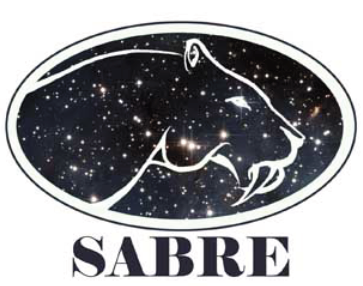
Sabre
The SABRE experiment is a dark matter experiment based on very pure sodium iodide scintillating crystals immersed in a liquid scintillator detector. A major goal for the experiment is to test the annual modulation signal that has been observed over many years by the DAMA/LIBRA experiment. SABRE is currently in development phase.
I worked on the SABRE experiment during my postdoctoral studies.
Borexino
Borexino was the first liquid-scintillator based solar neutrino experiment. The Borexino collaboration developed and demonstrated many of the techniques used to achieve the ultra-low background levels that are critical to the success of these detectors, and subsequent experiments, including SNO+, have benefitted greatly from the Borexino research and development.
Borexino made the first measurements of the low energy 7Be, pp, and pep solar neutrino fluxes, as well as the first observation of geo-neutrinos. The ultra-low background levels in the experiment have also made it possible to search for exotic new physics, including Pauli-forbidden decays, high energy solar axions, and anti-neutrinos from the Sun.
The Borexino experiment has now completed its 10-year data taking run at the Laboratori Nazionali del Gran Sasso (LNGS) laboratory in Italy. I worked on Borexino during my postdoctoral research.
DarkSide
DarkSide is a new experiment attempting to detect the galactic dark matter. The DarkSide detector is a "two-phase argon TPC," meaning it consists of a target of liquid argon beneath a layer of argon gas. This allows interactions in the liquid argon to be detected in two ways: through the direct production of scintillation light in the liquid argon, and by using an electric field to drift the ionization electrons from the primary particle track to the gas layer, where they produce a second pulse of light via electroluminescence. Observing each event in these two channels helps DarkSide to distinguish nuclear recoil signals from electron recoil backgrounds.
The DarkSide experiment is carefully designed to have an extremely low rate of background events. DarkSide is also the first experiment to make use of argon extracted from underground sources, which has a much lower level of the radioactive isotope 39Ar than does argon collected from the atmosphere. The extensive use of active background suppression allows the experiment to both reject the remaining background events and to make an accurate in situ measurement of the true background environment in the detector. In the event that dark matter is detected, this precise understanding of the backgrounds will make it much easier for DarkSide to convince the community that a signal has, in fact, been observed.
DarkSide-50, the first physics-capable detector in the DarkSide program, is currently operating at the Gran Sasso Laboratory in Italy. The collaboration is also developing the much larger DarkSide-20k detector. I worked on DarkSide during my postdoctoral research.
SNO
The Sudbury Neutrino Observatory (SNO) experiment studied solar neutrinos through their interactions with a target consisting of 1000 tonnes of heavy water (2H2O). With heavy water, the high energy 8B solar neutrinos could be observed using three different interactions, one of which was sensitive only to electron neutrinos and one of which was sensitive to all three neutrino species. In order to shield the experiment from cosmic-ray induced backgrounds, the detector was assembled 6800' underground in Vale's (formerly INCO's) Creighton Mine in Sudbury, Ontario.
SNO showed that some of the electron neutrinos produced in the Sun change into other neutrino species as they propagate to the Earth. This observation of "flavour change" in solar neutrinos, together with atmospheric neutrino observations by the Super-Kamiokande experiment, proved that neutrinos have non-zero mass. This discovery was celebrated with the 2015 Nobel Prize in Physics. SNO also provided important information about the "oscillation mechanism" behind neutrino flavour change and about the nuclear fusion reactions that power the sun.
The SNO experiment has now ended, but the SNO detector infrastructure is being re-used in the SNO+ experiment. I worked on SNO during my graduate studies.

